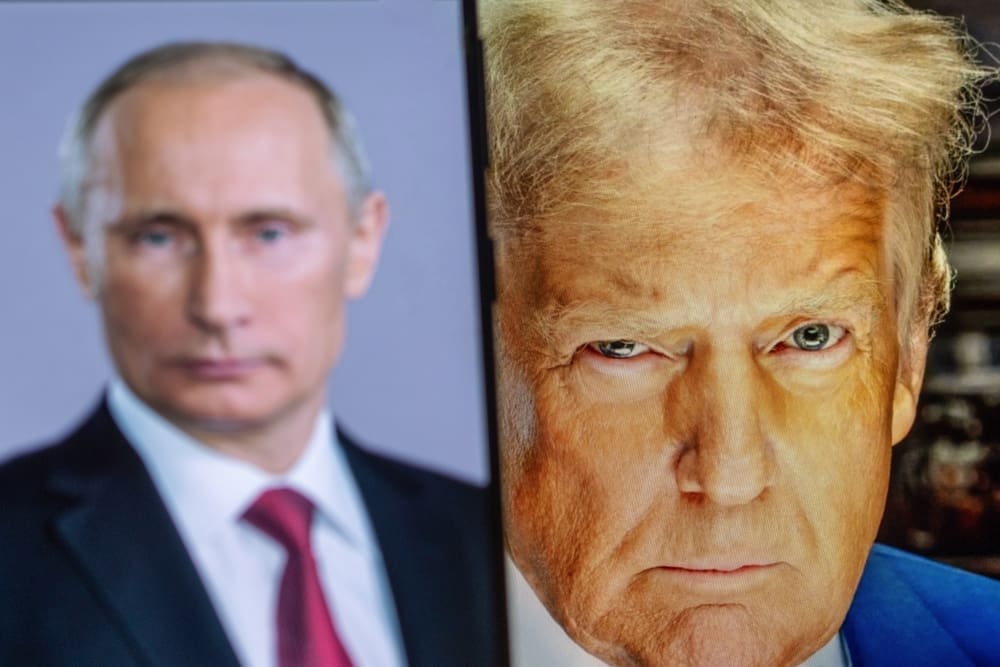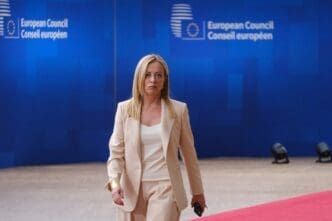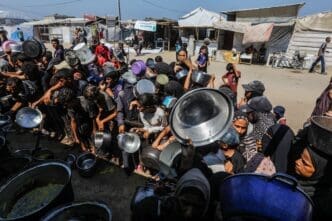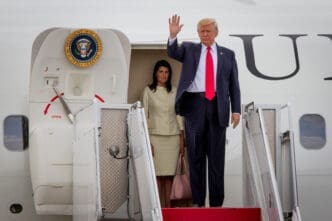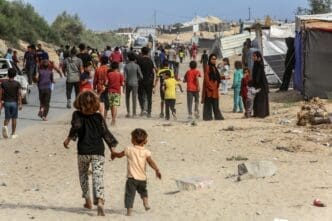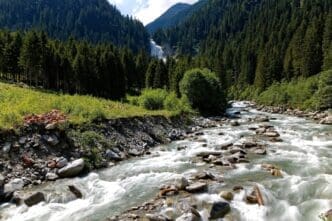KEY POINTS
- President Donald Trump announced he will meet with Russian President Vladimir Putin in Alaska on August 15, 2025, to negotiate a peace deal for the war in Ukraine.
- The summit was revealed after Russia proposed a ceasefire in exchange for Ukraine ceding significant territory, including Crimea and the eastern Donbas region.
- The plan has been met with skepticism from European officials who view it as a ploy to avoid new U.S. sanctions and a difficult political challenge for Ukrainian President Volodymyr Zelensky, who would need to change his country’s constitution to accept any territorial concessions.
WASHINGTON – President Donald Trump announced Friday evening that he will meet with Russian President Vladimir Putin in Alaska next week, a stunning diplomatic development that came on the very day his administration’s deadline for a ceasefire in Ukraine was set to expire.
The surprise summit was unveiled after U.S. officials briefed European allies on a new peace proposal from the Kremlin, in which Russia has offered to halt the war in exchange for Ukraine ceding significant territory, including Crimea and the eastern Donbas region.
The announcement of the face-to-face meeting, the first between the two leaders since 2018, marks a pivotal moment in the three-year war and a major gamble for President Trump, who is now personally stepping into the role of chief negotiator in a bid to secure a peace deal.
“The highly anticipated meeting between myself, as President of the United States of America, and President Vladimir Putin, of Russia, will take place next Friday, August 15, 2025, in the Great State of Alaska. Further details to follow,” Trump posted on his Truth Social platform Friday evening.
The announcement capped a week of intense, behind-the-scenes diplomacy. The Russian proposal was presented to Trump’s special envoy, Steve Witkoff, during a meeting in Moscow on Wednesday. The plan would reportedly require Ukraine to cede the entirety of the Donbas region—the majority of which is currently occupied by Russia—as well as formally recognize Russia’s 2014 annexation of Crimea. In exchange, Russia would agree to a ceasefire that would freeze the current battle lines.
The proposal, however, has been met with significant alarm and skepticism from some European officials. They have voiced deep concern that the plan is a cynical ploy by Putin to avoid the crippling new U.S. sanctions that were supposed to come due on Friday, while offering little of substance in return.
“Official recognition of territory conquered by force without a cost is an incentive to do more in the future,” one European official briefed on the matter said. “It could incentivize Russia to do more attacks on Ukraine again in a few years.”
It was not immediately clear what the plan would mean for other Ukrainian territories partially occupied by Russia, such as Zaporizhzhia and Kherson, beyond a halt in the Russian offensive there. Nor was it clear how the proposal would address Russia’s other long-standing demands, including a pledge that Ukraine never join NATO.
According to sources familiar with the discussions, U.S. officials have been trying to get their European allies to agree to the plan, framing it as a crucial first step toward a broader peace negotiation.
President Trump, who has expressed growing frustration with Putin in recent months for drawing out the conflict, appeared optimistic on Friday that a deal was within reach. “The European leaders want to see peace,” Trump told reporters at the White House before announcing the Alaska meeting. “President Putin, I believe, wants to see peace, and Zelensky wants to see peace.”
He later added, “My instinct really tells me that we have a shot at” peace.
The prospect of Ukraine ceding any of its territory, however, remains a monumental stumbling block. Such concessions are against the Ukrainian constitution, meaning President Volodymyr Zelensky would need to secure permission from his parliament or win a national referendum before he could agree to any shift in the country’s borders.
Trump on Friday downplayed those concerns, suggesting he had urged Zelensky to expedite the process. “He’s going out and getting what he needs,” Trump said. “He’s not authorized to do certain things. I said, ‘Well, you’re going to have to get it fast, because, you know, we’re getting very close to a deal.’”
The summit will be the first time Putin has visited the United States in nearly a decade; his last visit was for a meeting with then-President Barack Obama at the UN General Assembly in September 2015.
Trump and Putin met face-to-face six times during the U.S. president’s first term, most notably at a high-profile and deeply controversial summit in Helsinki, Finland, in July 2018, where Trump appeared to side with the Russian leader over his own intelligence agencies on the issue of Russian election interference.
The announcement of the Alaska meeting marks a dramatic reversal from the administration’s hardline stance just days ago. After threatening severe economic punishment if a ceasefire was not reached by Friday, Trump struck a much less confrontational tone on Thursday, telling reporters, “It’s going to be up to (Putin)” if the deadline would hold.
The surprise summit now places President Trump at the center of a high-stakes diplomatic gambit. It offers a potential, though highly controversial, path to ending Europe’s bloodiest conflict since World War II, but one that is fraught with risks and could be seen by critics as a reward for Russian aggression at the expense of Ukrainian sovereignty.

